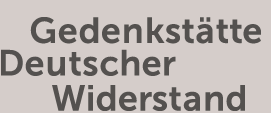German Resistance Memorial Center 1933 to 1945
The Bendler Block from 1933 to 1945
In January 1933, senior Reichswehr officers under General Kurt Freiherr von Hammerstein-Equord met in the Bendler Block to discuss whether Hitler's appointment to chancellor could still be prevented.
It was here, as early as February 3, 1933, that Hitler revealed his ruthless political goals to his senior generals: the "extermination of Marxism" and "conquest of living space in the east."
The following year, General Werner Freiherr von Fritsch, Hammerstein's successor, barricaded himself in his official residence behind heavily armed guards during the wave of murders of June 30, 1934.
By 1938 the Bendler Block had acquired its present form following the construction of new buildings and additions to existing ones on the adjoining plot on Bendlerstrasse 10-13, which had been purchased in 1926. Following the dismissal of Blomberg and Fritsch, General Walther von Brauchitsch became Commander-in-Chief of the Army and moved into Bendlerstrasse 14 early in 1938. He was to be the last Commander-in-Chief before Hitler later assumed this office as well.
The main building on the Landwehrkanal housed parts of the Navy High Command as well as the Office for Foreign Affairs/Counter Intelligence in the Armed Forces High Command under Admiral Wilhelm Canaris.
The Allgemeines Heeresamt (General Army Office) of the Army High Command headed by General Friedrich Fromm, and from 1940 on by General Friedrich Olbricht, took up the major part of the east wing. It was here that General Friedrich Olbricht transformed the operational plan code-named "Valkyrie," officially intended to suppress a possible revolt by foreign slave laborers, into a plan for a coup against Hitler.
From October 1943 on, Colonel Claus Schenk Graf von Stauffenberg held the post of chief of staff of the General Army Office on Bendlerstrasse. From June 1944 on, he served as chief of staff of the Ersatzheer (Reserve Army) and had clearance to attend briefings at Hitler's headquarters in the so-called "Wolf's Lair" near Rastenburg in East Prussia.
On July 20, 1944, Stauffenberg detonated a bomb in the briefing building at Hitler's headquarters and flew back to Berlin, where the conspirators in the Bendlerstrasse desperately tried to set the coup in motion until into the evening. But Hitler survived the explosion, and the coup was doomed to failure. That night after Ludwig Beck had been forced to commit suicide, Colonel General Fromm ordered the summary execution of Claus Schenk Graf von Stauffenberg, Friedrich Olbricht, Albrecht Ritter Mertz von Quirnheim, and Werner von Haeften in what is now the commemorative courtyard of the Bendler Block.
On May 2, 1945, Soviet troops occupied the Bendler Block, which until the very end had served as the command post of Berlin's military commandant, General Helmuth Weidling.

